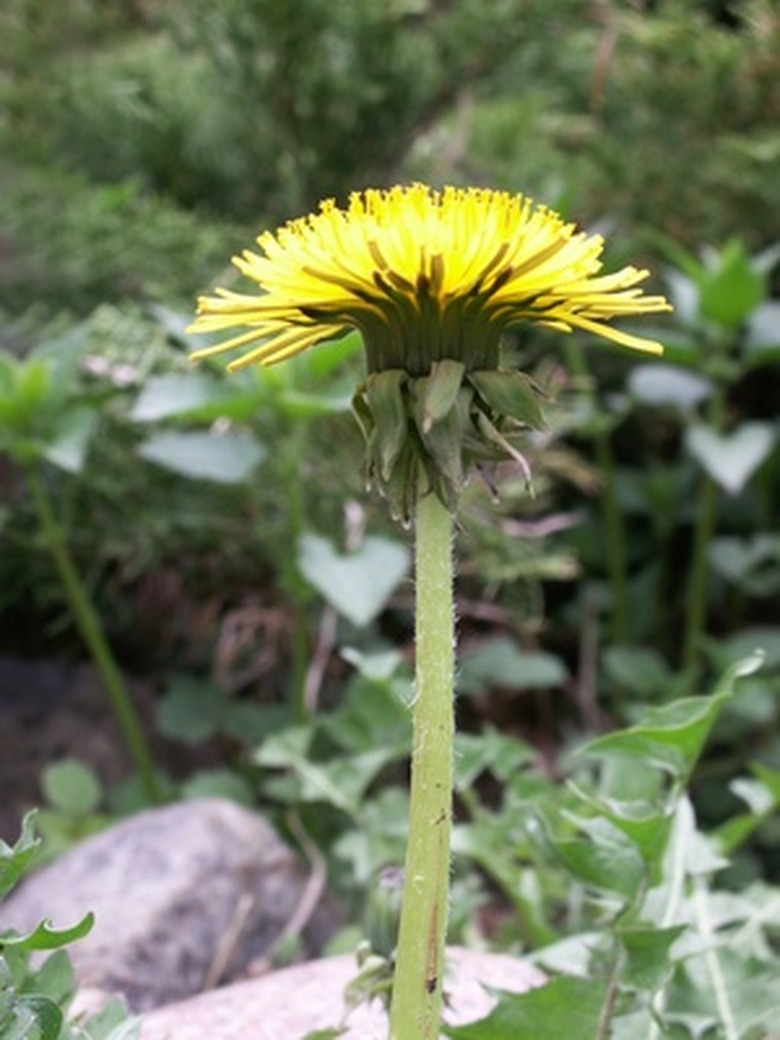How To Cook Fresh Dandelion Root
Dandelions are more nutritious than spinach and broccoli. All parts of the plant are edible, and the leaves are high in potassium, iron and calcium. The plant has a deep taproot that can be anywhere from 6 inches to 3 feet long, according to the University of Wisconsin Extension Service. Dandelions have the most flavor before the first flowers appear, when the plants are tender and young. Dandelion roots have a turniplike flavor and are best dug up in early spring when prepared as a vegetable.
Step 1
Dig up dandelions in early spring using a spade. Keep the taproot of each plant intact.
- Dandelions are more nutritious than spinach and broccoli.
- Dandelions have the most flavor before the first flowers appear, when the plants are tender and young.
Step 2
Pull the greenery from the plants. You can eat the leaves of the plants, either uncooked like salad greens or stewed separately from the roots in boiling water.
Step 3
Rinse each dandelion root under cold water, removing all dirt. Check to make sure each root is free of insects.
Step 4
Peel the outer skin from each taproot using your fingers or a paring knife. The skin is bitter tasting.
Step 5
Cover the roots with water in a pan, and bring them to a boil on the stove. Reduce the heat and simmer the roots. Test doneness by stabbing one or two roots with a fork. When the fork easily goes into the taproots, they are ready.
- Pull the greenery from the plants.
- When the fork easily goes into the taproots, they are ready.
Step 6
Drain the water from the dandelion roots, rinse them with warm water and serve. Season the roots as you would carrots.
Dandelions Have Fibrous Roots?
Fibrous roots have a fine texture and grow just beneath the soil surface branching off in many directions. A taproot is a single, thick root that grows deeper into the soil. Dandelions grow from a lengthy taproot that, when severed, can grow into multiple new plants. It also enables them to thrive in many different climates and conditions. Dandelions do have some redeeming value. The roots are used in certain medicines and coffee. By preventing dandelions from dispersing seeds, they are less likely to overtake a garden or lawn and can be admired for their benefits rather than despised for their very presence.
- Drain the water from the dandelion roots, rinse them with warm water and serve.
- By preventing dandelions from dispersing seeds, they are less likely to overtake a garden or lawn and can be admired for their benefits rather than despised for their very presence.
Things Needed
- Gardening spade
- Paring knife
- Saucepan
- Fork
Warning
Never cook and eat dandelions that have been treated with chemicals, such as weed killer.
References
- University of Illinois Extension: Dandelions
- University of Nebraska-Lincoln: Spring Dandelion Control
- The Pennsylvania State University Extension: Common Dandelion
- University of California Agriculture and Natural Resources: Dandelions
- Washington State University: Dandelion
- Purdue University: Dandelions and Other Lawn Weeds
- Botanica; R.G. Turner, Jr.
- The University of Arizona: Botany-Plant Parts and Function
